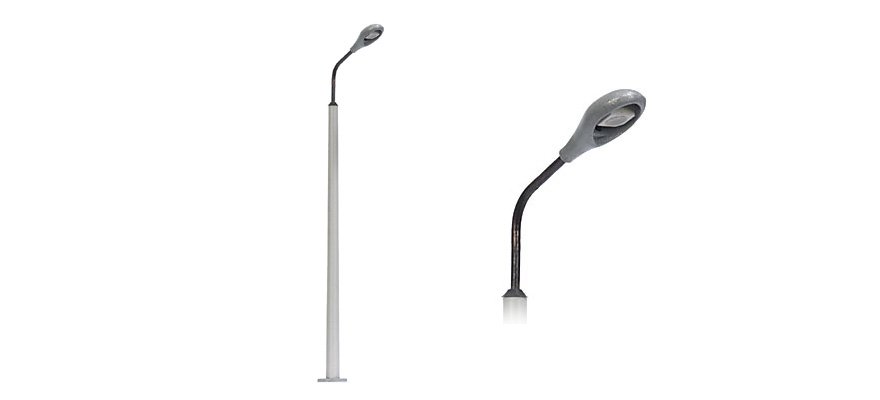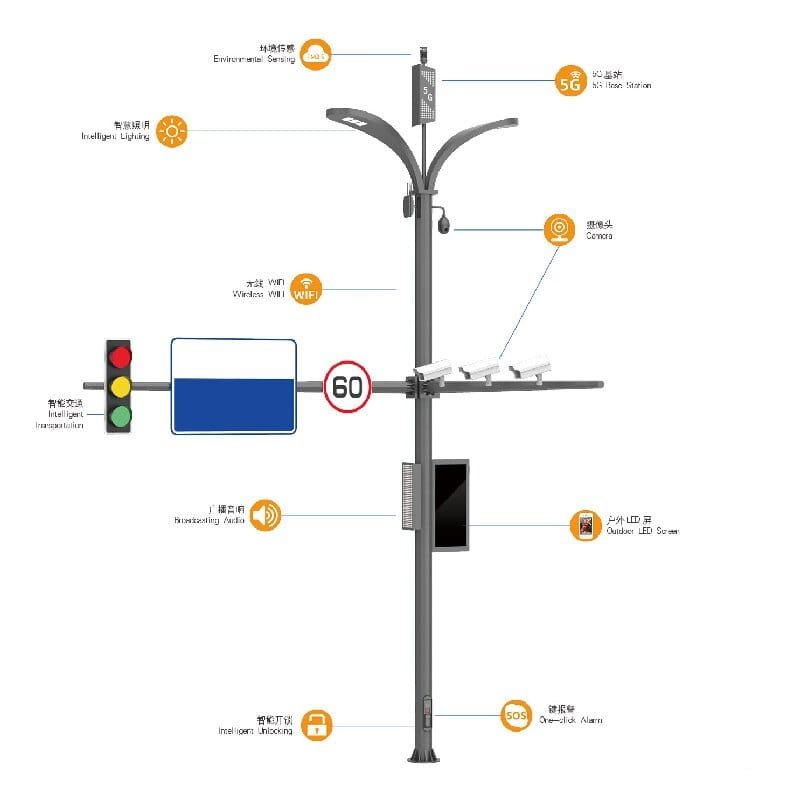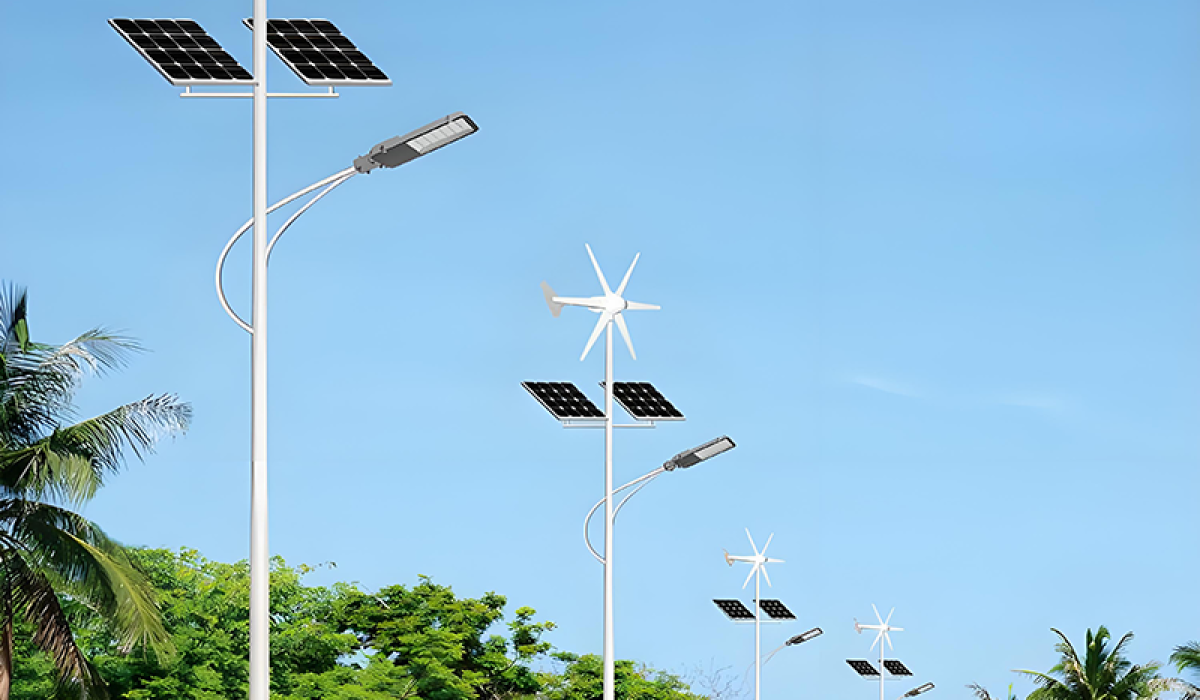Ever stood on a construction site wondering which light pole actually fits your project? Too tall, and you're overspending. Too short, and you've got dark corners. Chalco aluminum light poles come in different shapes, sizes, and functions—for a reason.
From highways to smart cities, each pole serves a purpose. Here's how to navigate your choices with confidence and clarity.
1. Straight Light Poles: Your Everyday Workhorse

Chalco’s straight pole in use along a city roadway
Picture a busy city street or a residential lane. You need reliable, consistent lighting that just works.
These poles are best suited for:
- Urban roadways
- Community walkways
- Parking lots
Unlike fancy solutions, straight poles aren’t here to impress—they're here to perform. We’ve used them in multiple municipal projects where budget mattered most, and they’ve never disappointed. If simplicity and function are your goal, this is your pole.
2. Pole-Holding Light Poles: Lighting Plus Functionality
Ever noticed traffic signs and streetlights sharing the same pole near intersections? That’s no accident.
Pole-holding designs combine lighting with signposts or signal supports, cutting installation space and project costs.
Common sites:
- Road crossings
- Dense urban corridors
This is a go-to solution when space is tight and multitasking is essential—think of it like a multi-tool for street infrastructure. One client described it as “the Swiss Army knife of street poles.”
3. High Pole Light Poles: When Scale Demands Height
In a recent industrial yard install, our client tried spacing standard poles 20 meters apart—it left blind zones. The fix? High mast poles at 30 meters with 8 floodlights each.
These are ideal for:
- Highways
- Logistics parks
- Seaports and airports
High pole systems provide wide-area coverage with fewer units. That saves on trenching, wiring, and long-term maintenance. If your project has a big footprint but limited maintenance access, this should top your list.
4. Landscape Light Poles: Where Lighting Becomes Art

Elegant pole designs for public squares and green zones
Function meets form here. These poles blend lighting with landscape architecture.
You’ll see them in:
- Public parks and gardens
- Scenic routes
- Boutique commercial districts
They’re not just poles—they’re part of the scenery. Choose them when you want light that adds beauty, not just visibility.
5. Solar Street Light Poles: Off-Grid and On Point
These poles don’t need trenching or a grid connection. In one case, we deployed 60 solar units in a rural township in less than a week—zero power bills since.
Perfect for:
- Remote villages
- Recreational trails
- Disaster-resilient projects
With increasing energy costs, solar poles aren’t just eco-friendly—they’re financially smart. If power access is unreliable or sustainability is a top priority, start here.
6. Traffic Signal Light Poles: For Order and Safety
There’s no room for failure at a highway junction. These poles support traffic lights, cameras, and signage in one durable frame.
Best placed in:
- Signal-controlled intersections
- High-volume city roads
They’re built for longevity, especially where safety is non-negotiable. Hot-dip galvanized finishes and robust cross-arm designs make them resilient to both time and weather.
7. Smart Street Light Poles: Intelligent Infrastructure
Imagine a pole that dims itself after midnight, alerts you to a lamp fault, and collects traffic data. That’s what smart poles offer.
Applications include:
- Digital city zones
- Commercial tech parks
- Environmentally smart corridors
Integrated with sensors, cameras, and remote management systems, smart poles are your ticket to tomorrow’s urban management—today.
8. Camera Monitoring Poles: Light + Eyes on the Street

Dual-purpose lighting and surveillance in school and park settings
Lighting is one part of public safety—monitoring is the other. These poles combine both.
Frequently installed in:
- School zones
- Transit terminals
- Public plazas
We’ve deployed them in several East African markets, particularly in retail-heavy districts. They’re discreet yet effective.
Frequently Asked Questions
Q1: Do solar street light poles work in cloudy or rainy climates?
Yes. Most systems come with batteries that store excess solar energy for 3–5 days of backup lighting.
Q2: How tall should a high pole light pole be for a logistics yard?
For 10,000+ sqm areas, a height between 25–35 meters is ideal, with 6–12 fixtures mounted per pole.
Q3: Can smart poles be integrated into existing infrastructure?
In many cases, yes. Retrofitting is possible but depends on the pole’s structural condition and local IoT capabilities.
Final Advice
Choosing a pole isn’t just about height or material—it’s about matching function to context.
- For budget-tight urban roads: Straight poles
- For large-scale logistics: High mast systems
- For design-conscious areas: Landscape poles
- For remote or green projects: Solar or smart poles
Whatever your lighting challenge, Chalco aluminum poles offer a robust, flexible, and tested solution.


